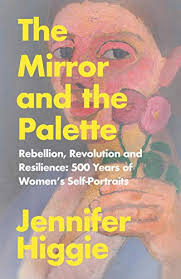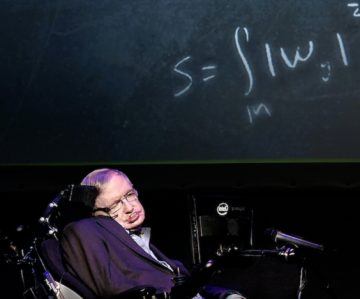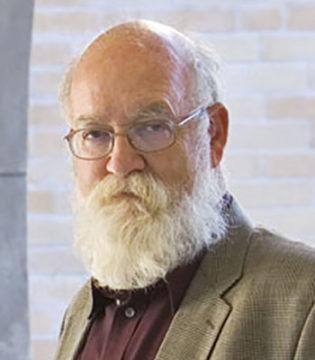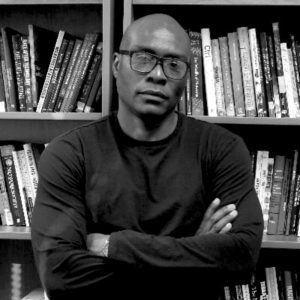Ross Douthat in the New York Times:
 No problem concerns journalists and press-watchers so much these days as the proliferation of conspiracy theories and misinformation on the internet. “We never confronted this level of conspiracy thinking in the U.S. previously,” Marty Baron, the former executive editor of The Washington Post, told Der Spiegel in a recent interview. His assumption, widely shared in our profession, is that the internet has forged an age of false belief, encouraged by social media companies and exploited by Donald Trump, that requires new thinking about how to win the battle for the truth.
No problem concerns journalists and press-watchers so much these days as the proliferation of conspiracy theories and misinformation on the internet. “We never confronted this level of conspiracy thinking in the U.S. previously,” Marty Baron, the former executive editor of The Washington Post, told Der Spiegel in a recent interview. His assumption, widely shared in our profession, is that the internet has forged an age of false belief, encouraged by social media companies and exploited by Donald Trump, that requires new thinking about how to win the battle for the truth.
Some of that new thinking leads to surprising places. For instance, my colleague Kevin Roose recently reported that some experts wish that the Biden administration would appoint a “reality czar” — a dystopian-sounding title, he acknowledged, for an official charged with coordinating anti-disinformation efforts — as “the tip of the spear for the federal government’s response to the reality crisis.”
Meanwhile, my fellow Opinion writer Charlie Warzel recently explored the work of the digital literacy expert Michael Caulfield, who argues that the usually laudable impulse toward critical thinking and investigation is actually the thing that most often leads online information-seekers astray. Instead of always going deeper, following arguments wherever they seem to lead, he suggests that internet users be taught to simplify: to check arguments quickly against mainstream sources, determine whether a given arguer is a plausible authority, and then move on if the person isn’t.
I’m pretty doubtful of the “reality czar” concept, but Caulfield’s arguments were more interesting.
More here.

 Higgie’s book is a riposte to Renoir and centuries of unknowing and misjudging. Reading it is like travelling with an ever-excited companion who has lots to say, not all of it profound as it tumbles out in profusion and partisanship, and not always quite trustworthy, but always compelling. She is rightly enraged at the historical neglect of women artists. The marvellous illustrations here confirm her assessment of the quality of their work. Few nowadays would argue with her proposition that the history of art is ‘the history of many women not receiving their dues’. Beginning research for this book, she was ‘staggered’ by the depth and variety of paintings made by women, despite the formidable restrictions placed in their way, and despite believing herself already well informed on the subject. Ending her book, I felt much the same way, and excited at the prospect of finding out more.
Higgie’s book is a riposte to Renoir and centuries of unknowing and misjudging. Reading it is like travelling with an ever-excited companion who has lots to say, not all of it profound as it tumbles out in profusion and partisanship, and not always quite trustworthy, but always compelling. She is rightly enraged at the historical neglect of women artists. The marvellous illustrations here confirm her assessment of the quality of their work. Few nowadays would argue with her proposition that the history of art is ‘the history of many women not receiving their dues’. Beginning research for this book, she was ‘staggered’ by the depth and variety of paintings made by women, despite the formidable restrictions placed in their way, and despite believing herself already well informed on the subject. Ending her book, I felt much the same way, and excited at the prospect of finding out more. On a road into New Delhi, countless cars a day speed over tonnes of plastic bags, bottle tops and discarded polystyrene cups. In a single kilometre, a driver covers one tonne of plastic waste. But far from being an unpleasant journey through a sea of litter, this road is smooth and well-maintained – in fact the plastic that each driver passes over isn’t visible to the naked eye. It is simply a part of the road. This road, stretching from New Delhi to nearby Meerut, was laid using a system developed by Rajagopalan Vasudevan, a professor of chemistry at the Thiagarajar College of Engineering in India, which replaces 10% of a road’s bitumen with repurposed plastic waste.
On a road into New Delhi, countless cars a day speed over tonnes of plastic bags, bottle tops and discarded polystyrene cups. In a single kilometre, a driver covers one tonne of plastic waste. But far from being an unpleasant journey through a sea of litter, this road is smooth and well-maintained – in fact the plastic that each driver passes over isn’t visible to the naked eye. It is simply a part of the road. This road, stretching from New Delhi to nearby Meerut, was laid using a system developed by Rajagopalan Vasudevan, a professor of chemistry at the Thiagarajar College of Engineering in India, which replaces 10% of a road’s bitumen with repurposed plastic waste. When Eugen Sandow (pictured) opened his first School of Physical Culture in London in the summer of 1897, he ensured that its decor matched his personal brand. On arrival at 32A St James’s Street, visitors found themselves facing a life-sized statue of the founder himself. A nearby oil painting depicted Sandow as an ancient gladiator. In both cases his sculpted physique evoked the spirit of Greek classicism that Sandow, regarded in his heyday as the “perfect man”, strove to embody.
When Eugen Sandow (pictured) opened his first School of Physical Culture in London in the summer of 1897, he ensured that its decor matched his personal brand. On arrival at 32A St James’s Street, visitors found themselves facing a life-sized statue of the founder himself. A nearby oil painting depicted Sandow as an ancient gladiator. In both cases his sculpted physique evoked the spirit of Greek classicism that Sandow, regarded in his heyday as the “perfect man”, strove to embody. In one of his 2016 Reith Lectures, Stephen Hawking said an odd thing. “People have searched for mini black holes… but have so far not found any,” he intoned with his trademark voice synthesiser. “This is a pity, because if they had I would have got a Nobel Prize.” The audience at the Royal Institution in London (which included me) laughed. But I was struck by how unusual it was for a scientist to state publicly that their work warranted a Nobel. It was no passing comment. A few minutes later, Hawking described how mini black holes—which he predicted in the early 1970s—might yet be seen in the Large Hadron Collider (LHC) at CERN in Geneva. “So I might get a Nobel Prize after all,” he added, to more laughter.
In one of his 2016 Reith Lectures, Stephen Hawking said an odd thing. “People have searched for mini black holes… but have so far not found any,” he intoned with his trademark voice synthesiser. “This is a pity, because if they had I would have got a Nobel Prize.” The audience at the Royal Institution in London (which included me) laughed. But I was struck by how unusual it was for a scientist to state publicly that their work warranted a Nobel. It was no passing comment. A few minutes later, Hawking described how mini black holes—which he predicted in the early 1970s—might yet be seen in the Large Hadron Collider (LHC) at CERN in Geneva. “So I might get a Nobel Prize after all,” he added, to more laughter. I first encountered a snippet of the seventy-two-foot-long painted invitation letter as a four by six-inch reproduction in Susan Gole’s pioneering Indian Maps and Plans (New Delhi: Manohar, 54). No measurements were noted. Yet, I imagined the scroll’s spread—it motivated me to abandon archival research in the British Library and travel to Bikaner at short notice in April 2009. Housed in the Abhay Jain Granthalaya, maintained as the personal library of the renowned scholar of Jain religion and culture, Dr. Abhaychand Nahata, I never anticipated the extent to which this artifact would impact my research. As the librarian, Mr. Chopra, helped me carefully unfurl the scroll, held together by a spindle on either end in an openable glass box, Udaipur’s painted streets, shops, and sights were revealed. At any given instance, I could examine only a two-foot section of the scroll. I attempted to retain the painted vignette past my line of vision just as we stack storefronts in our memory while walking through a busy bazaar. Similarly, the composite image, presented within the rectangular window of the
I first encountered a snippet of the seventy-two-foot-long painted invitation letter as a four by six-inch reproduction in Susan Gole’s pioneering Indian Maps and Plans (New Delhi: Manohar, 54). No measurements were noted. Yet, I imagined the scroll’s spread—it motivated me to abandon archival research in the British Library and travel to Bikaner at short notice in April 2009. Housed in the Abhay Jain Granthalaya, maintained as the personal library of the renowned scholar of Jain religion and culture, Dr. Abhaychand Nahata, I never anticipated the extent to which this artifact would impact my research. As the librarian, Mr. Chopra, helped me carefully unfurl the scroll, held together by a spindle on either end in an openable glass box, Udaipur’s painted streets, shops, and sights were revealed. At any given instance, I could examine only a two-foot section of the scroll. I attempted to retain the painted vignette past my line of vision just as we stack storefronts in our memory while walking through a busy bazaar. Similarly, the composite image, presented within the rectangular window of the  THE CANVAS IS LARGE, standing more than seven feet tall and six feet wide. Painted on a white ground, the composition reveals numerous areas in which white paint has been energetically brushed over marks in other colors, progressively editing a roiling chaos of gestures down to a sparer, more defined structure with several especially prominent elements. In the upper register, just left of center, overlapping brushstrokes in shades of red, black, blue-green, and yellow combine to form a thick vertical line, as if marking out the operative axis. Just below this upright element, there appears a dense flurry of multicolored gestures. Clustered in a roughly horizontal zone, this array tapers to either side but is both extended and visually weighted toward the right. Also on the right, a bit farther down, dozens of brushstrokes have again been layered one atop the other, creating a diagonal band. At the very bottom of the picture, yet another cluster of predominantly oblique gestures form a rough wedge, drawing the eye to the lower right. The artist has signed her first initial and last name: J. MITCHELL.
THE CANVAS IS LARGE, standing more than seven feet tall and six feet wide. Painted on a white ground, the composition reveals numerous areas in which white paint has been energetically brushed over marks in other colors, progressively editing a roiling chaos of gestures down to a sparer, more defined structure with several especially prominent elements. In the upper register, just left of center, overlapping brushstrokes in shades of red, black, blue-green, and yellow combine to form a thick vertical line, as if marking out the operative axis. Just below this upright element, there appears a dense flurry of multicolored gestures. Clustered in a roughly horizontal zone, this array tapers to either side but is both extended and visually weighted toward the right. Also on the right, a bit farther down, dozens of brushstrokes have again been layered one atop the other, creating a diagonal band. At the very bottom of the picture, yet another cluster of predominantly oblique gestures form a rough wedge, drawing the eye to the lower right. The artist has signed her first initial and last name: J. MITCHELL. IT’S ONE OF THE MIGHTIEST RIVERS you will never see, carrying some 30 times more water than all the world’s freshwater rivers combined. In the North Atlantic, one arm of the Gulf Stream breaks toward Iceland, transporting vast amounts of warmth far northward, by one estimate supplying Scandinavia with heat equivalent to 78,000 times its current energy use. Without this current — a heat pump on a planetary scale — scientists believe that great swathes of the world might look quite different.
IT’S ONE OF THE MIGHTIEST RIVERS you will never see, carrying some 30 times more water than all the world’s freshwater rivers combined. In the North Atlantic, one arm of the Gulf Stream breaks toward Iceland, transporting vast amounts of warmth far northward, by one estimate supplying Scandinavia with heat equivalent to 78,000 times its current energy use. Without this current — a heat pump on a planetary scale — scientists believe that great swathes of the world might look quite different. It sounds like the plot of some cop-buddy movie: an anarchic hippie social worker (Snoop Dogg or Owen Wilson) is forced to team up with a straight-laced conservative cop (Clint Eastwood, the Rock). Chaos and hilarity ensue. Life lessons are learned. In this case, it actually happened.
It sounds like the plot of some cop-buddy movie: an anarchic hippie social worker (Snoop Dogg or Owen Wilson) is forced to team up with a straight-laced conservative cop (Clint Eastwood, the Rock). Chaos and hilarity ensue. Life lessons are learned. In this case, it actually happened. It was the news Sophie Gryseels had been dreading for months. Almost a year into the pandemic, a seemingly healthy wild mink tested positive for SARS-CoV-2 in Utah. No free-roaming animal was known to have caught the virus before, although researchers had been watching for this closely. “It’s happened,” wrote Gryseels, an evolutionary biologist at the University of Antwerp, Belgium, in an e-mail to her colleagues. Ever since the coronavirus started spreading around the world, scientists have worried that it could leap from people into wild animals. If so, it might lurk in various species, possibly mutate and then resurge in humans even after the pandemic has subsided.
It was the news Sophie Gryseels had been dreading for months. Almost a year into the pandemic, a seemingly healthy wild mink tested positive for SARS-CoV-2 in Utah. No free-roaming animal was known to have caught the virus before, although researchers had been watching for this closely. “It’s happened,” wrote Gryseels, an evolutionary biologist at the University of Antwerp, Belgium, in an e-mail to her colleagues. Ever since the coronavirus started spreading around the world, scientists have worried that it could leap from people into wild animals. If so, it might lurk in various species, possibly mutate and then resurge in humans even after the pandemic has subsided. Causation and control are not the same thing. Not all things that are caused are controlled. Things that are controlled are caused, like everything else, but control requires a controller, an agent of sorts designed to control a process, and that requires feedback: information about the trajectory and conditions that can be used by the controller to modulate the action. This is a fundamental point of control theory. Think about firing a rifle bullet. You’re controlling the direction of the gun barrel and, with the trigger, the time of the bullet emerging from the gun barrel. Are you controlling the course of the bullet after that? No. Where it goes after it leaves the muzzle is out of your control. Now, if you’re a really good shot, you may be able to calculate in advance the windage and so forth and you may be able to get it in the bull’s eye almost every time. But you are unable to affect the trajectory of the bullet after it leaves the gun. So it is not a controlled trajectory, it is a ballistic trajectory. It goes where it goes and, if your eyes were good enough to watch it and see that it was going “off course,” you’d have feedback, but you wouldn’t be able to do anything about it. Feedback is only useful information coming back to a controller if the controller also maintains an informational link back to the thing that’s being controlled. You fired the gun. You caused that bullet to go where it went, but you did not control the bullet after it left the gun. Compare that with a guided missile. A guided missile, after it’s launched, can still be controlled, to some extent, often to a great extent (as in a cruise missile). As you know, one of the chief inventions of technology in warfare in the last fifty years is the development of remote control missiles and, of course, remote control drones. Remote control is real, and readily distinguished from out of control. Autonomy is non-remote control, local or internal control, and it is just as real, and even more important.
Causation and control are not the same thing. Not all things that are caused are controlled. Things that are controlled are caused, like everything else, but control requires a controller, an agent of sorts designed to control a process, and that requires feedback: information about the trajectory and conditions that can be used by the controller to modulate the action. This is a fundamental point of control theory. Think about firing a rifle bullet. You’re controlling the direction of the gun barrel and, with the trigger, the time of the bullet emerging from the gun barrel. Are you controlling the course of the bullet after that? No. Where it goes after it leaves the muzzle is out of your control. Now, if you’re a really good shot, you may be able to calculate in advance the windage and so forth and you may be able to get it in the bull’s eye almost every time. But you are unable to affect the trajectory of the bullet after it leaves the gun. So it is not a controlled trajectory, it is a ballistic trajectory. It goes where it goes and, if your eyes were good enough to watch it and see that it was going “off course,” you’d have feedback, but you wouldn’t be able to do anything about it. Feedback is only useful information coming back to a controller if the controller also maintains an informational link back to the thing that’s being controlled. You fired the gun. You caused that bullet to go where it went, but you did not control the bullet after it left the gun. Compare that with a guided missile. A guided missile, after it’s launched, can still be controlled, to some extent, often to a great extent (as in a cruise missile). As you know, one of the chief inventions of technology in warfare in the last fifty years is the development of remote control missiles and, of course, remote control drones. Remote control is real, and readily distinguished from out of control. Autonomy is non-remote control, local or internal control, and it is just as real, and even more important. The internet has made it so much easier for people to talk to each other, in a literal sense. But it hasn’t necessarily made it easier to have rewarding, productive, good-faith conversations. Here I talk with sociologist Rod Graham about what kinds of conversations the internet does enable, and should enable, and how we can work to make them better. We discuss both how social media are used for nefarious purposes, from cyberbullying to driving extremism, but also how they can be mobilized for more lofty goals. We also get into some of the lost nuances in conventional discussions of race, including how many minorities are more culturally conservative than an oversimplified narrative would lead us to believe, and the tricky relationship between online discourse and social cohesion.
The internet has made it so much easier for people to talk to each other, in a literal sense. But it hasn’t necessarily made it easier to have rewarding, productive, good-faith conversations. Here I talk with sociologist Rod Graham about what kinds of conversations the internet does enable, and should enable, and how we can work to make them better. We discuss both how social media are used for nefarious purposes, from cyberbullying to driving extremism, but also how they can be mobilized for more lofty goals. We also get into some of the lost nuances in conventional discussions of race, including how many minorities are more culturally conservative than an oversimplified narrative would lead us to believe, and the tricky relationship between online discourse and social cohesion.